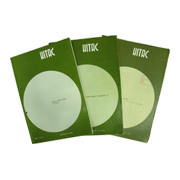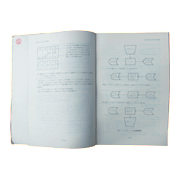The HITAC 8000 series consisted of medium to large general-purpose machines that were developed based on a technical collaboration with RCA plus Hitachi’s unique technology. For this series, Hitachi initially introduced the RCA OSs POS (Primary OS), TOS (Tape OS) and TDOS (Tape Disk OS), and subsequently developed DOS, EDOS and EDOS-MSO based on these OSs.
POS was a simple OS that had no system equipment and provided only four SVCs (Supervisor Call). TOS, and later OSs were capable of running 6 programs, while TDOS used a disk as the system device. However, the work areas and libraries of the compiler were based on a magnetic tape.
DOS was an operating system based on TDOS that was independently developed by Hitachi as a system operating only with a disk. DOS supported multitasking and reentrant FCP (File Control Processor) as an OS for online use. It also supported new functions that were inherited by later OSs, such as keying simulation and IPC. Thus, the basic structure of Hitachi’s online systems was established during that era.
In 1969, Hitachi announced EDOS, which had enhanced functionality based on DOS. EDOS features included:
(1) Increased batch processing capacity
Strengthening the job management function in order to enable it to simultaneously process three job streams, and incorporating newly introduced input reader and output writer, meant that the OS could realize substantially greater batch processing capacity.
(2) Excellent online processing capacity
Using MCP (Multi-Channel Communication Program) for communication control, the OS provided excellent online processing capacity together with a multitasking function in the management program.
EDOS supported the programming languages FORTRAN, COBOL, RPG and an assembler. It also supported 26 utility programs that were useful in maintaining a program library and copying tapes, as well as a sort/merge program that classified and merged data.
Figure 1 shows the transition through the OSs up to EDOS, and their individual characteristics. Hitachi had been focusing on support for online systems since TDOS. With the introduction of DOS, it began supporting online systems in earnest, and advanced that support with EDOS and EDOS-MSO.
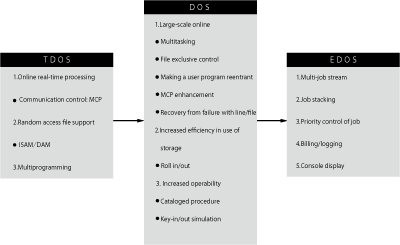 Figure 1 "Transition of OSs up to EDOS, and their characteristics"
Figure 1 "Transition of OSs up to EDOS, and their characteristics"
EDOS-MSO was developed for large systems as an extended version of EDOS. EDOS-MSO was used in what were then relatively large systems with storages of 196 KB or more. Hitachi announced EDOS-MSO in 1971 and started shipping it in 1972. Figure 2 shows the system configuration for EDOS-MSO.
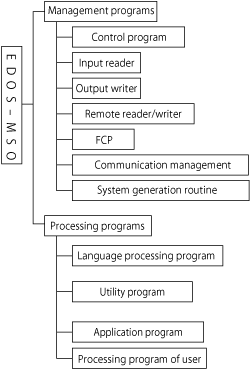 Figure 2 "System configuration for EDOS-MSO"
Figure 2 "System configuration for EDOS-MSO"
EDOS-MSO was designed to achieve simultaneous processing of a large batch, and large online and remote batches, and had the following features:
(1) Storage management using a multi-stage method
EDOS-MSO adopted a multi-stage method for storage management, and was capable of simultaneously processing up to 12 job streams. In addition to the stages, EDOS-MSO was equipped with various partitions for securing data areas to be shared with devices for processing a user program started by the operator, input reader, output writer, remote batch control program, user’s own code and others. Figure 3 shows the maximum storage configuration for EDOS-MSO.
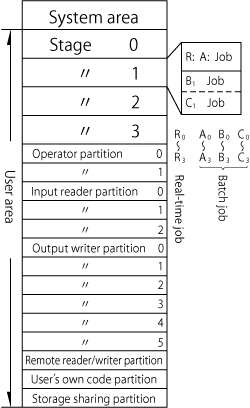 Figure 3 "Maximum storage configuration with EDOS-MSO"
Figure 3 "Maximum storage configuration with EDOS-MSO"(2) Automatic allocation of disk files
EDOS-MSO was capable of securing and allocating a file area of the size required for executing a program, even if the area was not pre-allocated using a utility program.
(3) AVR (Automatic Volume Recognition)
A management program automatically detected the device to which a disk pack or a magnetic tape was attached.
(4) Increased online processing capability
For an online system, the OS was capable of simultaneously processing up to 64 tasks using BCS (Basic Communication Support) or MCS (Multi-Channel Communication Support) as a communication management program.
(5) Increased batch processing capability
The OS was capable of simultaneously executing up to 3 input readers, 6 output writers and 14 jobs.
(6) Multiple consoles
The OS enabled separate operators to use two or more console units for different purposes, reducing the burden imposed on each operator.
(7) Enhanced fault control function
The OS stored records of faults detected by hardware and software in a disk storage unit. Some of the faults were detected by monitoring of I/O operation time. After such record was stored, recovery from the fault and separation of the irrecoverable part from the system were performed.
The HITAC 8000 series supported two types of database systems. EDOS supported PDM, which was a network-structured database for medium-scale DB systems. EDOS-MSO supported ADM, which was a DB/DC system for large-scale systems equipped with a data communication function, in addition to PDM.
The following table shows the relationship between the OSs for the HITAC 8000 series and the supported hardware. HITAC 8300, 8400 and 8500 were the first hardware models developed in technical collaboration with RCA. In 1971, Hitachi developed HITAC 8350 and 8450, which provided higher performance, reliability and operability.
|
|
POS/TOS
TDOS/DOS
|
EDOS
|
EDOS-MSO
|
|
8300
|
○
|
○
|
|
|
8400
|
○
|
○
|
○
|
|
8500
|
○
|
○
|
○
|
|
8350
|
|
○
|
○
|
|
8450
|
|
○
|
○
|
|
8700 basic mode
|
|
|
○
|





